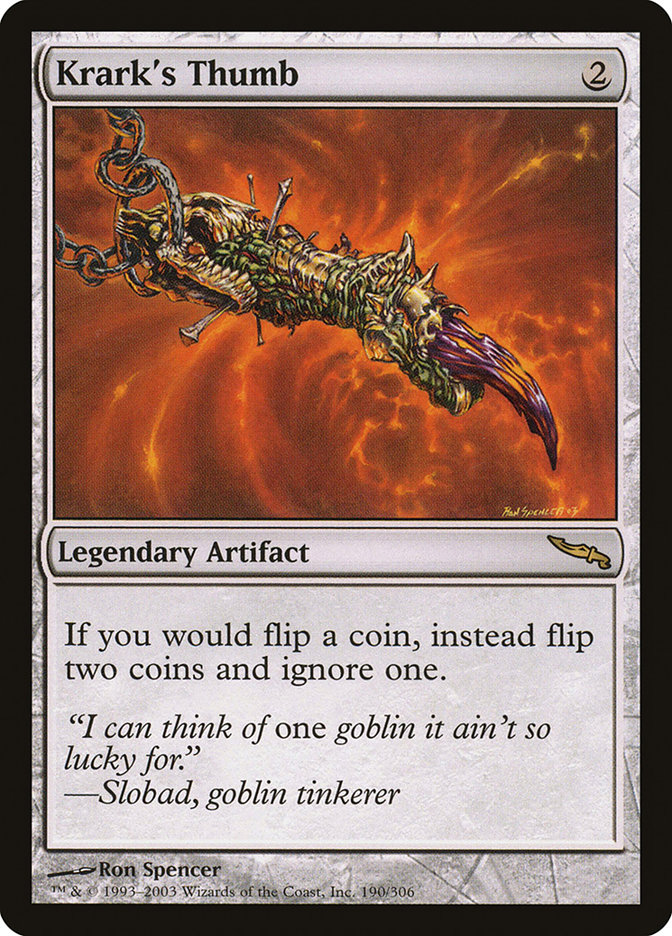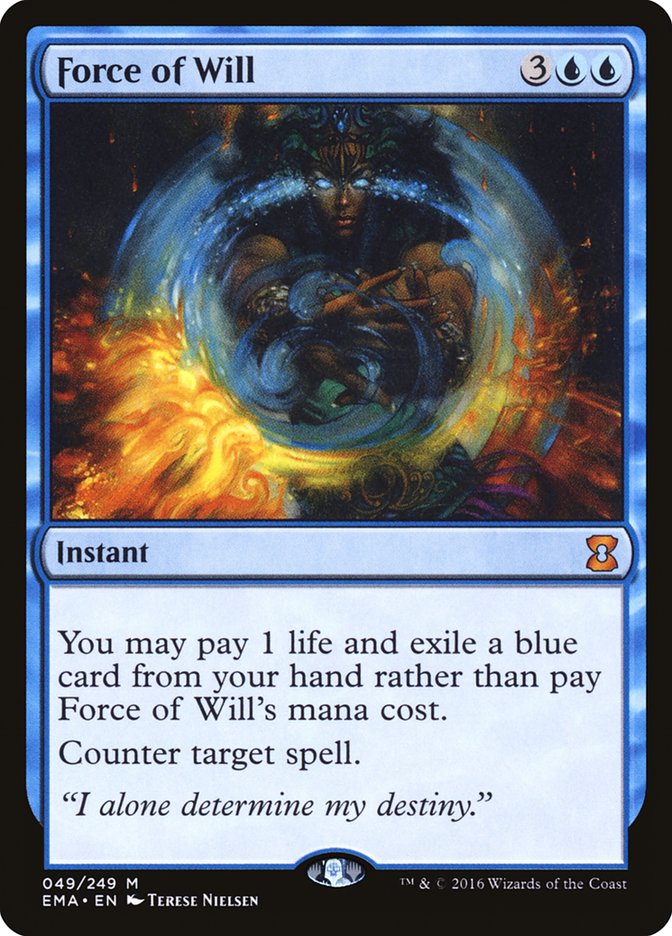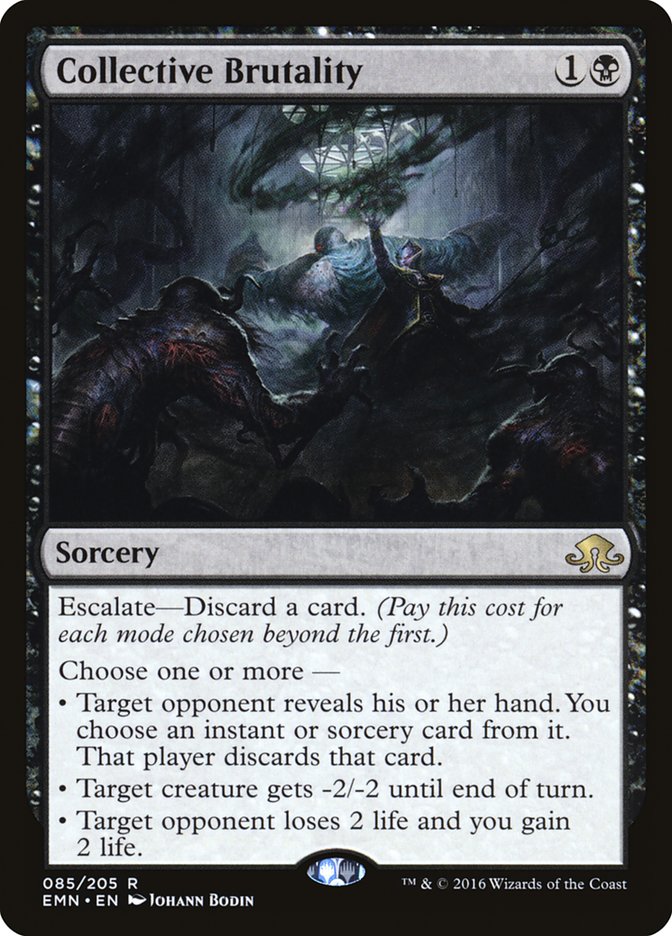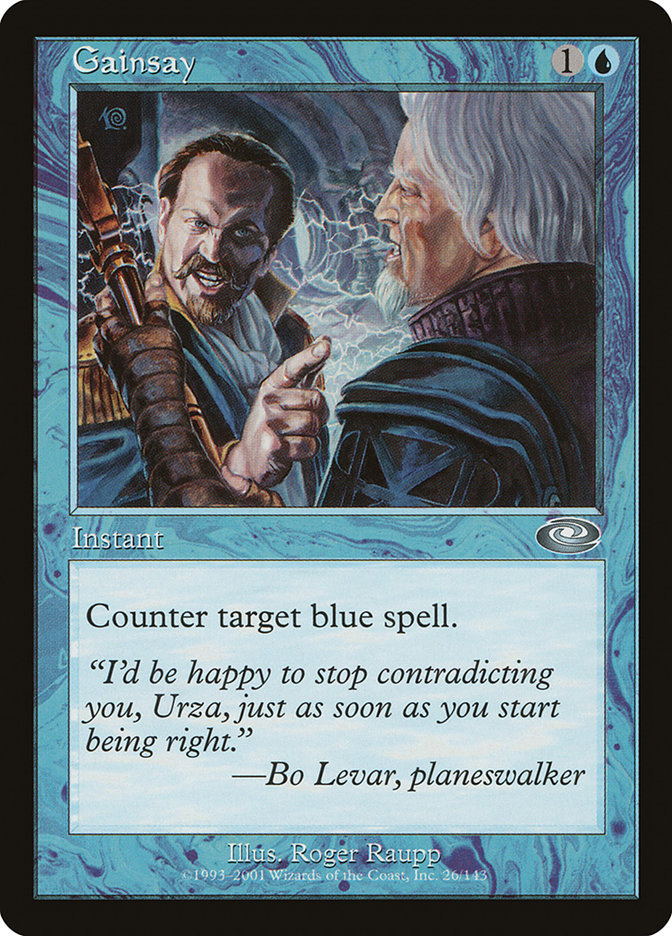As many of you have likely heard, Matt Severa, Justin Cohen, and I won Grand Prix Louisville this weekend. You may also know that Matt Severa and Justin Cohen won the last North American Team Grand Prix. You also probably have a sense that Team Limited is generally considered particularly skill-testing, and you also may know that Matt Severa and Justin Cohen are both Gold Pros, certainly great players, but likely not the pinnacle of North American Magic. So how did they win two GPs in a row?
It’s easy to brush these things off as variance, but, as we know, there’s not very much variance in Team Limited. It’s really hard for a disadvantaged team to win that many matches. I’d credit it to something else: superior preparation. I believe I have a solid case that that’s the cause, and I’d like to share that, as well as what that preparation looks like, as I believe there’s a huge edge in Team Limited available to those who are willing to work for it at this point.
Team Limited GPs are widely adored by pros, despite the fact that they get no byes at team GPs and three byes at individual GPs. Are we all just happy to sacrifice our equity for the experience of playing in a team event? Honestly, most of us probably would be, but, luckily for us, math and history indicate that that’s not necessary. The top four teams at team events historically have a much higher ratio of Gold and Platinum pros than the Top 8 of individual events, despite the removal of byes. The reason for this is simple: “best of three matches” leads to a much larger edge than “best of three games.” If a player is 60% likely to win each game they play, I believe they’re 64.8% to win a match (this is based on my own math, and I haven’t studied math in sixteen years, but I’m fairly confident I did this right). If a team of three people is each 60% to win each of their games, I believe they’re around 71.6% to win their round in a team event.
60% is a solid estimate for roughly how likely pros are to beat average Grand Prix competitors in any given game, but that also has to vary based on format. I’d argue that the complexity of building decks in Team Sealed, and the fact that opening more packs than individual Sealed on average smooths the variance between pools, mean that players on a more skilled team are likely actually more than 60% to win each game, although I don’t have data to determine an exact number.
Regardless, the loose mathematical models suggest that we should form a hypothesis that happens to line up with the observed results over a fairly large number of team GPs, leading to a solid conclusion that it’s the most skill-testing format at the Grand Prix level.
I don’t think I need to do anything to prove that a large number of other teams have better Magic pedigrees than the three of us, so I think it’s reasonable to conclude that there should be another variable at play here.
As an aside, I want to be extremely clear that I’m not trying to imply that the fact that we won, or the fact that they’ve won twice now, indicates that we were the single most likely team to win the event. There’s certainly still considerable variance, and I think all the best teams are very similar in likelihood to actually win. What I’m saying is that we need more than our raw talent or general skill at Magic to even be in the conversation, or to have results that are comparable to what we’ve done.
I believe there are a handful of teams who think that they were the best-prepared for the event by a wide margin. I think in reality, the margins between those teams who think they prepared well are likely not that wide, but that a vast majority of teams either don’t prepare or prepare horribly.
Specifically, I think most teams of pros prepare for Team Limited events by drafting individually to learn the format, briefly discussing those results with their teams, and, if they’re lucky, maybe building a couple of pools together and sometimes playing a match against another team who’s also built a pool.
I think there are two major areas where our preparation is better than most.
Gamesmanship
First, we play more games with Team Limited decks. People believe that they can draft to play games with the cards and learn how the cards play and what to play around, and then build decks to practice building decks. Then they evaluate those decks either just by looking at them and talking about how good they are or by playing one to three matches with them.
This isn’t enough to figure out how Team Limited plays and how it differs from Draft or Sealed. Team Limited decks have the synergy of Draft decks but the bombs of Sealed decks, the best of both worlds, and the fact that they’re built out of a larger card pool means that they approach (but only very slightly) Constructed decks–this is to say that they’re slightly more predictable. While a Draft deck or a Sealed deck might have to play a 30th-percentile card, you shouldn’t have to dip that low in Team Sealed. If you’ve built a particular archetype, you can be expected to have certain key cards for that archetype, or you just would have built something else. This means that familiar patterns emerge if you actually know the format.
As an example, I think it’s understood that black in Eldritch Moon is the weakest color at common, but it has some great rares. This means that in Draft, sometimes black decks will do well, usually because the color is likely to not be highly contested, so fewer players share the good cards and the players who draft it likely do so because they have rares. It still underperforms, because it is really bad and that’s hard to fully correct for, but the nature of drafts make worse colors playable.
In testing for GP Louisville, we found that almost every black deck we built tended to lose. Even if they looked relatively good, they just didn’t play out well. We decided that one of the keys to the format was figuring out how to use black well, and that we should penalize any black deck when estimating its strength. As a result, on Day 1, when we didn’t open any great black rares, we splashed three black cards in our U/G deck and ignored the rest of the color because we knew that it was better to find ways to split our other colors than to play a deck that relied on black commons.
I also experimented extensively with G/W Delirium. Earlier in the week, when Matt and I built a pool together, I built a G/W deck that was built to maximize some delirium cards, and he felt that I didn’t have enough enablers or payoffs to bother with. Over the course of the twenty or so games we played, delirium came up a lot, so we learned that the threshold for what was needed to support it was lower than he’d guessed. At the GP, we split both green and white: we had a W/R aggro deck, a G/U Emerge/Delirium deck, and a G/W Delirium deck. The G/U deck was a better home for Emrakul, the Promised End and Ishkanah, Grafwidow (yes, we also opened some great mythics) than the G/W Delirium deck, so it got those and Grapple with the Past to maximize them, but I knew that the G/W deck could be built to expect to get delirium despite giving up that card because I’d tested the limits before.
All Together Now
The other essential point of preparation is something Andrew Cuneo took away from the last Grand Prix, where we teamed together, that he shared with me, and definitely made sense: before entering the tournament, it’s critical that players’ card evaluations are as in sync as possible. If players have different priors, they’ll spend a huge amount of time debating the merits of including certain cards or playing certain archetypes. With only an hour to build, every minute spent debating a general principle of the format that you could have discussed in advance is a huge avoidable cost.
The problem here is that this isn’t something easy to cram for. How do you plan for every possibility and make sure you’re on the same page about every card? Well, this is where it helps a lot if you can play with friends and teammates who you regularly discuss Limited with. The three of us (and especially Justin and I) regularly discuss every takeaway from every draft throughout the format, starting with the Pro Tour, and then Justin organizes all the information for review, which we go over together, and then present to our team to review again.
This means that, aside from being more likely to agree on things right away, if one of us sees something that another doesn’t, we’re likely to know exactly where the other’s coming from, so we know how to make our case, and where their belief is likely coming from. Minimizing friction on each build we look at allows us to look at more possible configurations of our pool, so that once we find something we like, we can note it, still have lots of time to look at anything else we think has any chance of looking good, and then go back to the configuration that looked best and still have time to tune it.
If every team had three hours to build, so that you could talk through everything as much as you wanted, this wouldn’t be as important, but with only a single hour, knowing how your teammates think about the format (and, ideally, agreeing with them) is extremely important.
Justin and I were actually relatively out of sync for this event, in that he’d prepared an extensive study guide for the event that I never got around to going over with him. Fortunately, we’d already talked about a lot of this in preparing for the Pro Tour, and a lot of it was notes from other conversations we’d had. He was generous enough to share his preparatory spreadsheets on Twitter, and I highly recommend checking them out, as his process and thoroughness are truly impressive.
@meddlingmage @SamuelHBlack How about my prep materials instead? https://t.co/eDfUEmlDal
— Justin Cohen (@trippdup) September 13, 2016
All of this is to say that if you’re not a well0connected pro, there are two major takeaways. First, let’s be honest, unless you have a good reason to think you’re particularly likely to win a team GP, you’re almost certainly more likely to win an individual GP than you are to win a team GP unless you’re teaming with two players who are a lot better than you. Second, despite that, there is still a lot of room to get a large edge over most other teams, and I think it’s reasonable for an average team who puts in the work to expect to walk away with a solid finish.
To accomplish that, I recommend the following:
Talk to each other about Limited a lot. Matt Sperling and Paul Rietzl are excellent teammates; they’re both great players, but they overperform in Team Limited events. I believe that this is because, despite the fact that they live in different states, they regularly message each other about picks and games and generally discuss Magic a lot, so they work together smoothly.
Actually test Team Sealed; don’t just rely on your experience with other Limited formats.
Testing Team Sealed isn’t easy. You need to build pools together and you need to play a lot of games with Team Sealed decks. Ideally, it also helps if you build pools with other people so that you can learn from them, get a better idea how others approach the format, and maybe see a wider variety of decks. Before this event, I built with 3-4 other teams in addition to building multiple times with Matt and Justin. I can’t stress enough how important it is to play games in addition to building.
Vary your testing. There are a lot of things you need to test, and different strategies are best for each of them. For example, when practicing a Sealed build, is it best to give yourself an hour or to take your time with it? My answer is to do both. You need to give yourselves time to work through disagreements to help get on the same page, and to find the best decks to see what those decks look like.
For your first builds, build untimed, play some games, change the decks around, and play more games. Figure out the best way to build a pool and why. Later, especially if you haven’t built much under a clock, time your team and make sure you have a process you can execute in the hour you’ll have at the event. Don’t forget that you need time to distribute sideboard cards and register. Properly distributing sideboard cards is particularly important and can be time-consuming, because it involves brainstorming corner case uses for certain cards that could go in multiple sideboards.
I recognize that I’m recommending a strategy that takes a huge amount of time. Not all teams will be able to do this, which is precisely why I say that a large edge is available to those who do. Most of you aren’t professional players and likely have limited time to work on Magic, and the overlapping time where you can actually get together with your team is even more limited. If you have time but getting together is hard, build pools digitally and have each player build decks with the same pool. Talk about what you built after and why. This can help identify and work out disagreements on the format while allowing asynchronous effort. If two of you can get together, play games with decks you’ve built; if you can only get together online, play them there.
If one of you has a lot more time than the others, consider preparing spreadsheets or other preparation materials like Justin’s, linked above.
If you have very little time to prepare, just be really careful about teammate selection. You’ll likely get more out of teaming with people you know best, whom you can work with well, than out of playing with the most celebrated player you can find. While you’ll mostly be making your own decisions in your actual games, teamwork is so important to deckbuilding (and, for some, I imagine, offering advice in games, though I try to minimize that as much as possible, personally) that you have to prioritize building a cohesive team.
I know team GPs are a rarity, but they’re getting more common. If nothing else, I hope this has been an informative window into our process.








